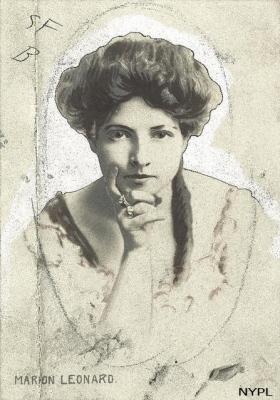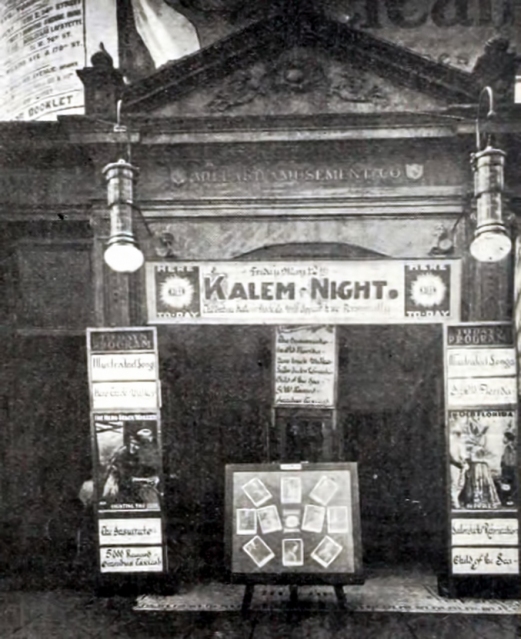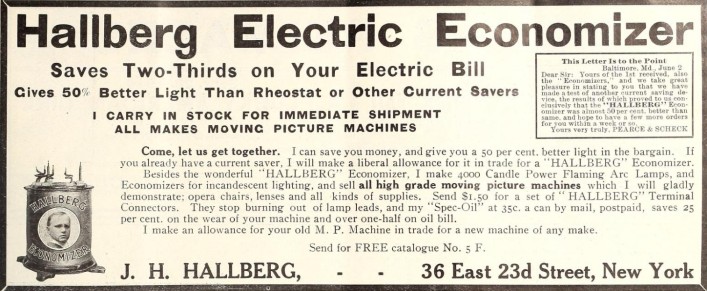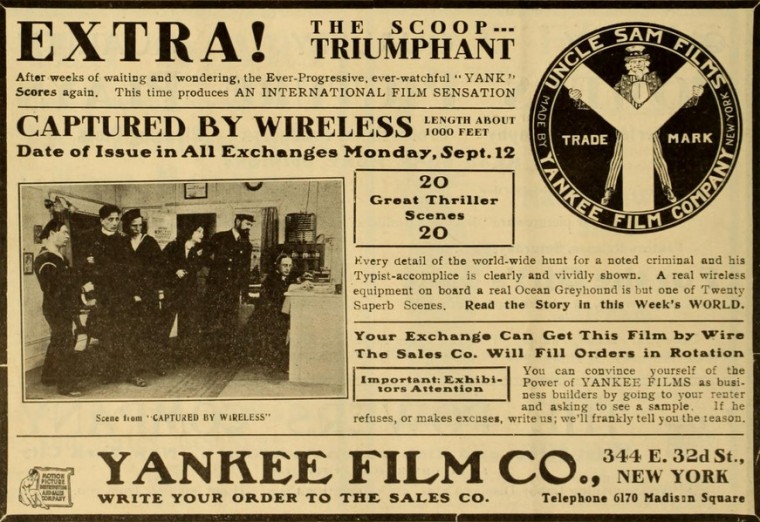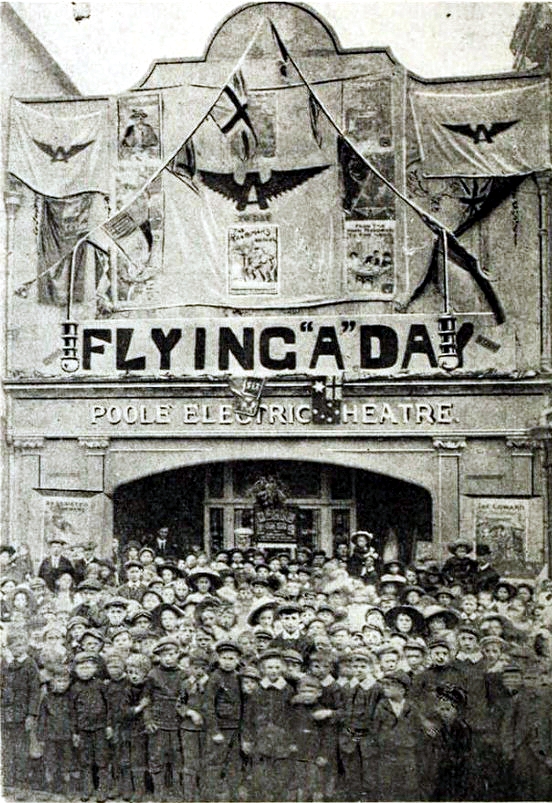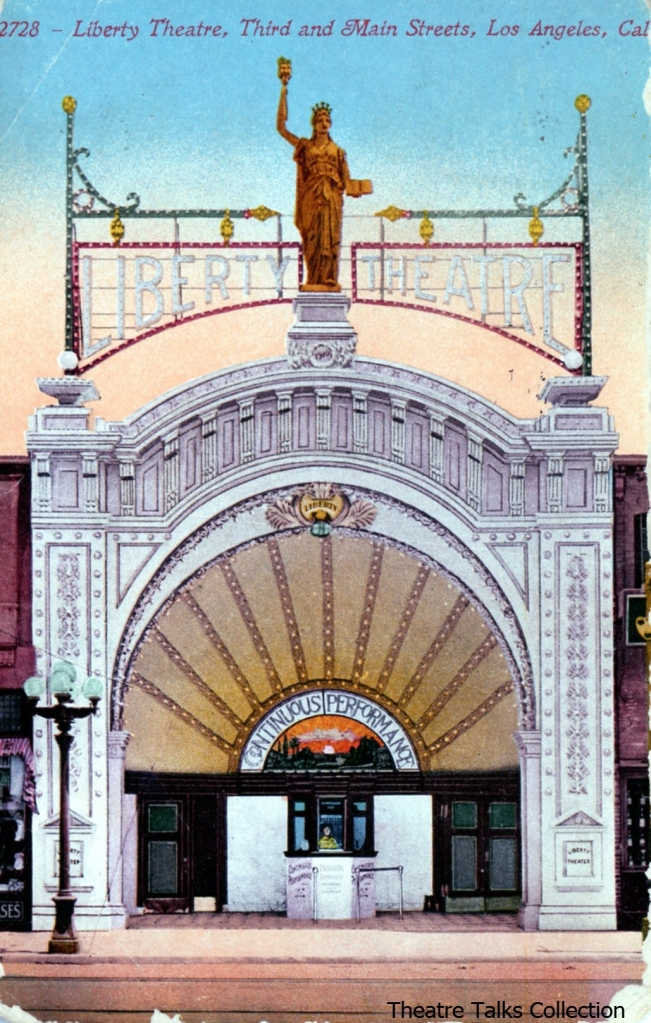Seating Capacity: 540
Architect: A. C. Martin
Construction: P. J. Bolin
Proprietors: Kaiser, Sturm, & Hughes
Excerpts from Moving Picture World, April 1, 1911:
“The ‘Liberty’ is one of the city’s eight first-class moving picture theaters. The selection of the theater site was chosen with exceptionally good judgement. The theater is located in the heart of the business district at 266-68 South Main Street, at the intersection of Third and Main Streets.”
“The front facade is of stucco and plaster-covered brick, the paneling and cornices outlined in small electric lights at night. The gold leaf statue crowning the cornice is ten feet in height, and, symbolizing liberty, holds aloft an electric torch. At the base of the statue in a laurel leaf gilded shield is the date of erection, 1910. Below this, on the crown of the shell-shaped lobby ceiling, is a second shield in gold leaf with the theater name ‘Liberty.’
“The floor of the lobby is of white tile, inlaid with a series of swastika design borders in green tile. The side walls of the lobby are wainscoted in white Italian marble to a height of eight feet, crowning which is a twelve-inch moulded cap of mahogany. The entrance doors are of mahogany, their bases trimmed in brass, and their upper panels of plate glass.
“The box office is roomy. It is also wainscoted in marble, the woodwork of the upper part being in mahogany and the windows of plate glass.
“The brick wall of the lobby contains a beautiful leaded art glass window, semi-circular in shape, with a landscape design of beautiful coloring, especially so when seen illuminated at night. Bordering the design are the words ‘Continuous Performance.’ Radiating from the art glass window, which forms the nucleus of the shell, are a series of stucco shell ribs, each containing fifteen clear-globed eight-candlepower lights.”
“The inner lobby leading to the auditorium is 15×20 feet in size. The floor is of white tile, with six inch baseboard of marble. The lobby is paneled in oak to a height of 30 inches, above which it is covered with an imitation leather fabric.”
“Opening off the lobby are retiring rooms for both men and women, the rooms also being finished in tile and marble. A narrow stairway opening off the lobby leads to the office, operators booth and organ loft.
“The operators booth is roomy and is equipped with the latest apparatus, including two Edengraph projectoscopes and a stereopticon. To the right of the operator’s balcony is the organ loft, containing a large pipe organ, a valuable addition to the orchestra in accompanying religious and special films.”
“The [auditorium] seats are of wood with iron standards. The side walls of the auditorium are paneled to a height of three feet in oak, above which are a series of five landscape paintings on each side, the borders of which are outlined with stenciled designs of a darker shade than the light green color scheme of the side walls.
“The height of the auditorium is twenty-four feet, and the stage is sixteen feet square. Facing the stage on each side are singing booths. The auditorium is illuminated by ceiling lights and ten pairs of art glass side lights of tulip design with green globes. The ceiling is of white plaster with cream trim, and from it are suspended five electric fans.
“The theatre is showing four first-run licensed films, and one illustrated song, except on Saturdays and Sundays, when two songs are used.
“The theater employs ten people. Girl ushers look after the seating arrangements. Five cents admission is charged to all parts of the house.”
“The theatre was completed early in the year and has played to good business ever since.”
For more on the Liberty
Cezar Del Valle is the author of the Brooklyn Theatre Index, a three-volume history of borough theatres.
Since 1997 theatre historian, Cezar Del Valle, has conducted a popular series of theatre talks and walks, available for historical societies, libraries, senior centers, etc.
The first two chosen 2010 OUTSTANDING BOOK OF THE YEAR by the Theatre Historical Society. Final volume published in September 2014.
Currently seeking funding for “Editing & Formatting” the first three volumes of the Brooklyn Theatre Index, 3rd Edition
AboutMe
Goodreads
Medotcom

